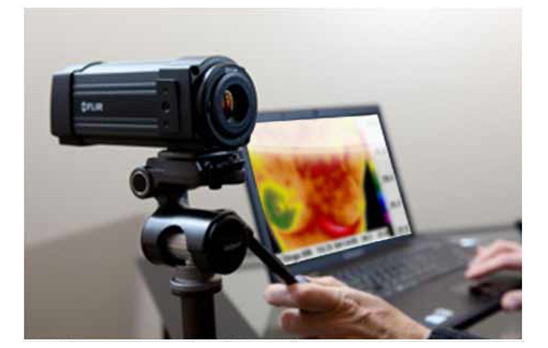-
Thermography for Life
Breast Thermography is applicable to all women, especially the group between 40 and 50, and for those who have dense, fibrocystic breasts or implants. It is a completely safe, non-invasive screening method that has been proven to be effective. An abnormal infrared image is the single-most important marker of high risk for developing breast disease. Read More -
Why Breast Thermography?
With all the attention focused on treating breast cancer lately, it is perplexing that many do not recognize the great gains to be made by addressing breast cancer prevention. Read More -
What is Thermography
Thermography measures the infrared radiation (heat) which is constantly radiating (emitting) away from the surface of the human skin. Skin as an organ breathes, exchanges gases with the environment, cools us as well as keeps us warm by letting heat out... Read More
- 1
- 2
- 3
Non Invasive
- Breast Infrared Thermography is 100% Safe
- Absolutely No Radiation and No Compression
- Thermography is a Measurement of Function
- An Early Warning System
- Helps to Monitor Breast Health
- Perfect for All Breast Shapes and Sizes
- Ideal for Long Term Tracking
- Provides Reliable Risk Assessment
See More
Risk Assessment:
- Precancerous or malignant tumors require an abundant supply of nutrients that can only come form elevated blood flow, causing an increase in temperature
- A persistent abnormal breast thermogram is thought to be “the single greatest indicator of risk” and is considered 10 times more important than a positive family history for the disease
Safe & Proven
- Over thirty years of clinical use and more than 800 peer-reviewed studies in the medical literature have established thermography as a safe and effective means to examine the human body.
- When used as an adjunctive procedure (clinical examination + mammography + breast thermography) 95% of early stage cancers are detected
Testimonials
Aug 30 2012- Details
|
Younger women generally do not consider themselves to be at risk for breast cancer. Statistics however show that breast cancer is the most common cause of death in women aged 35-54 and the incidence continues to rise. About a quarter of all breast cancers diagnosed this year will be diagnosed in women before menopause. We have also observed this increase at our clinic in women under the age of 50.
What is different about Breast Cancer in younger women?
Younger women generally have denser breast tissue than in older women. By the time a lump is felt in a younger woman’s breast the cancer is usually in an advanced stage and therefore is less likely to be treated effectively.
Rick factors involved in Breast Cancer
• Medical radiation exposure and especially exposure at younger age |
Lack of Screening
The high prevalence rate among younger women may reflect the lack of routine screening and due to low compliance of Breast self Examination (BSE) among this age group.
Nonetheless, an effective way of screening is available in the form of medical infrared thermography. Thermography becomes essential in helping many young women identify who is at a higher risk of developing breast cancer by assessment of how the breast functions. By identifying a high risk group early we can follow this group more vigilantly and when necessary escalate to other forms of testing which would involve structural tests like, Ultrasound, Mammography, and MRI.
Can breast cancer be prevented?
According to The World Health Organization 70% of all cancers can be prevented. Every woman should know her risk level for developing breast cancer. With proper risk assessment, that includes different testing modalities, the patient is able to determine her risk factors and develop an action plan on how to improve the breast tissue or even reverse the existing trend. The current mainstream screening strategy is not applicable to younger women, as it does not identify who is at risk before it is too late. Medical infrared thermography should be added to every woman's regular breast health care because the earlier and younger, the better.
|



 Alexander Mostovoy, D.H.M.S.,BCCT
Alexander Mostovoy, D.H.M.S.,BCCT